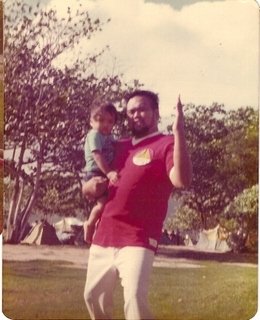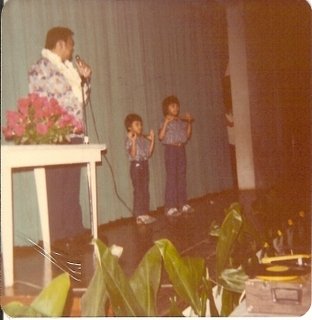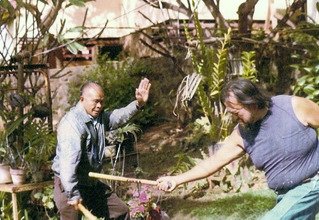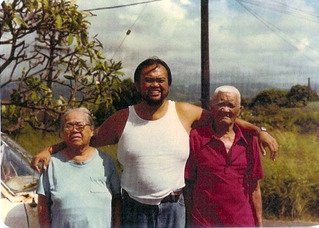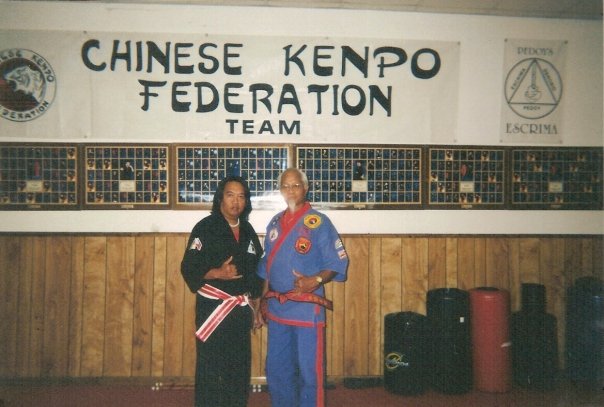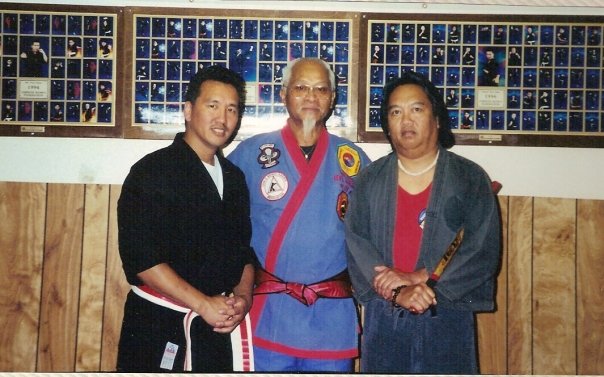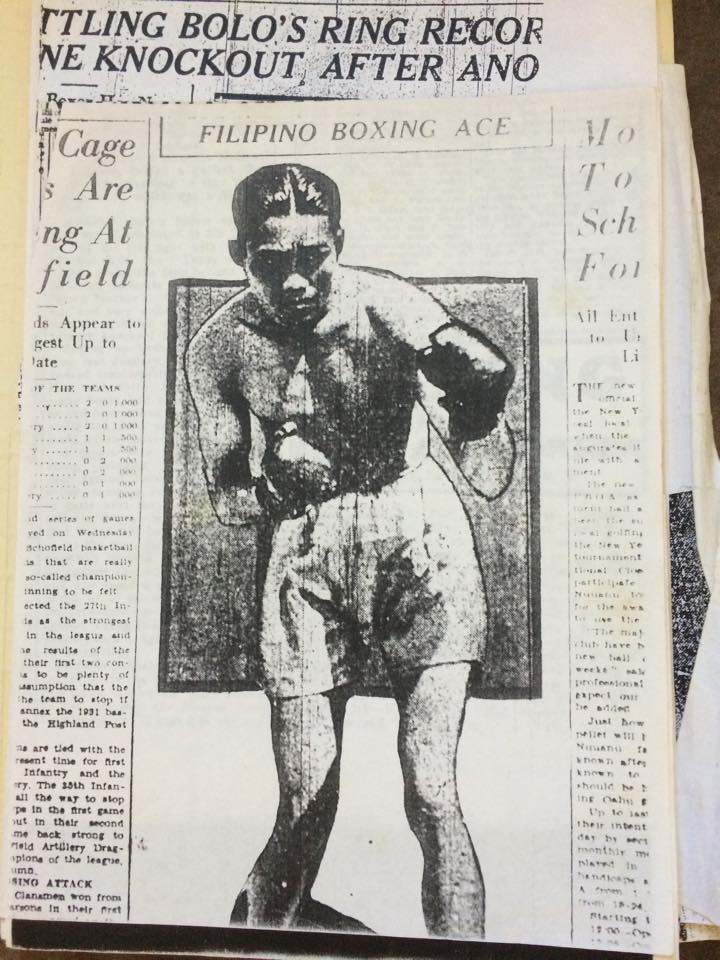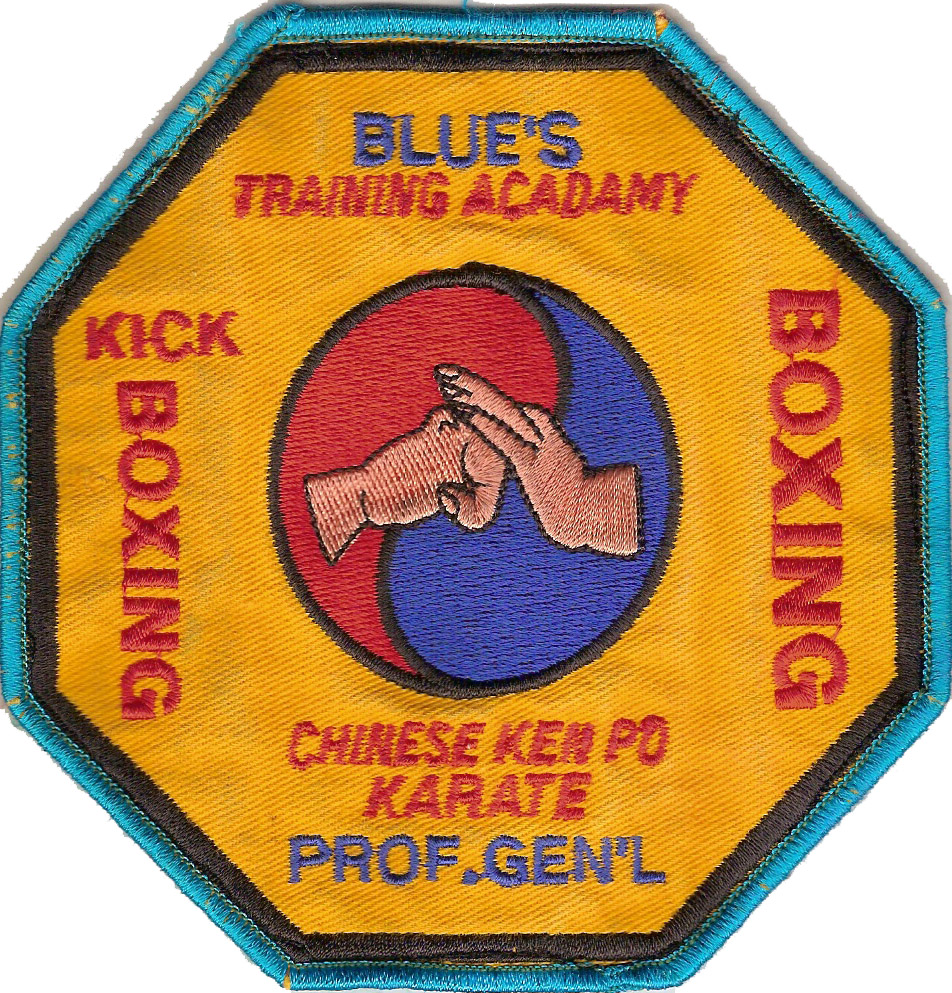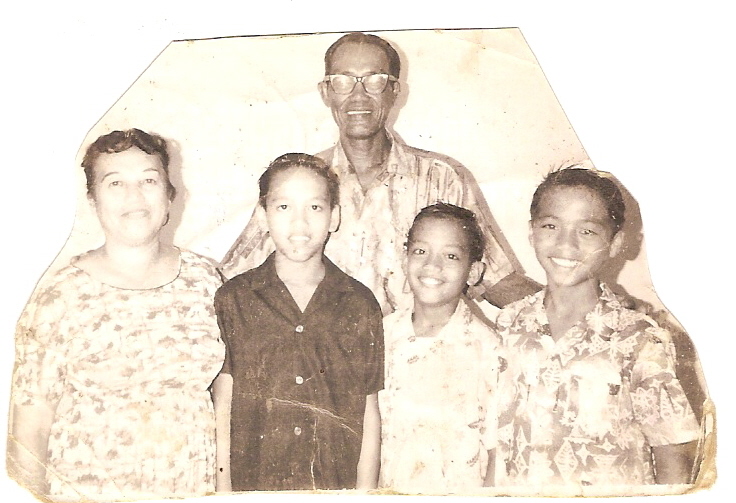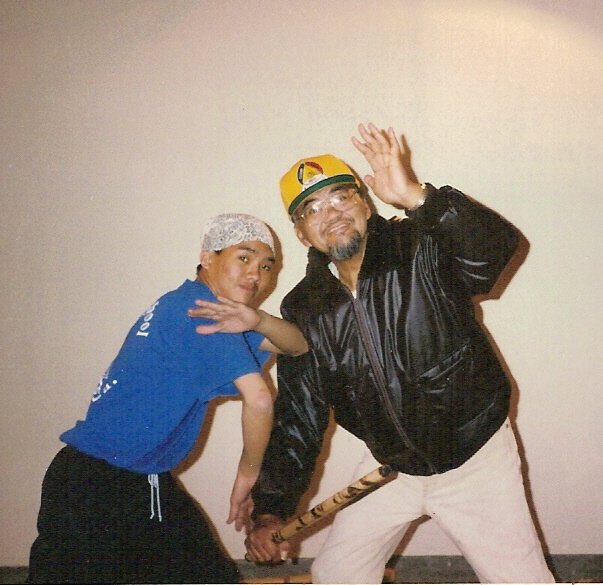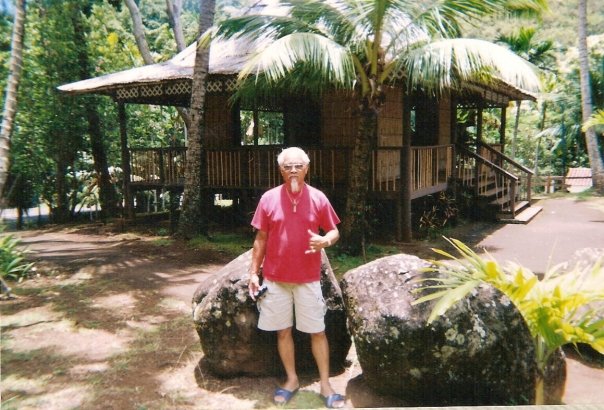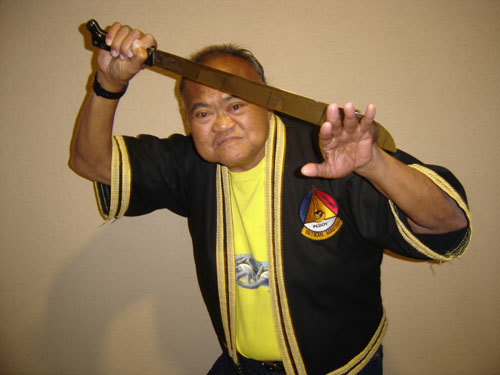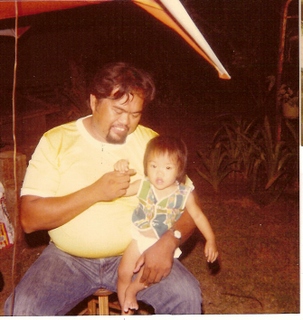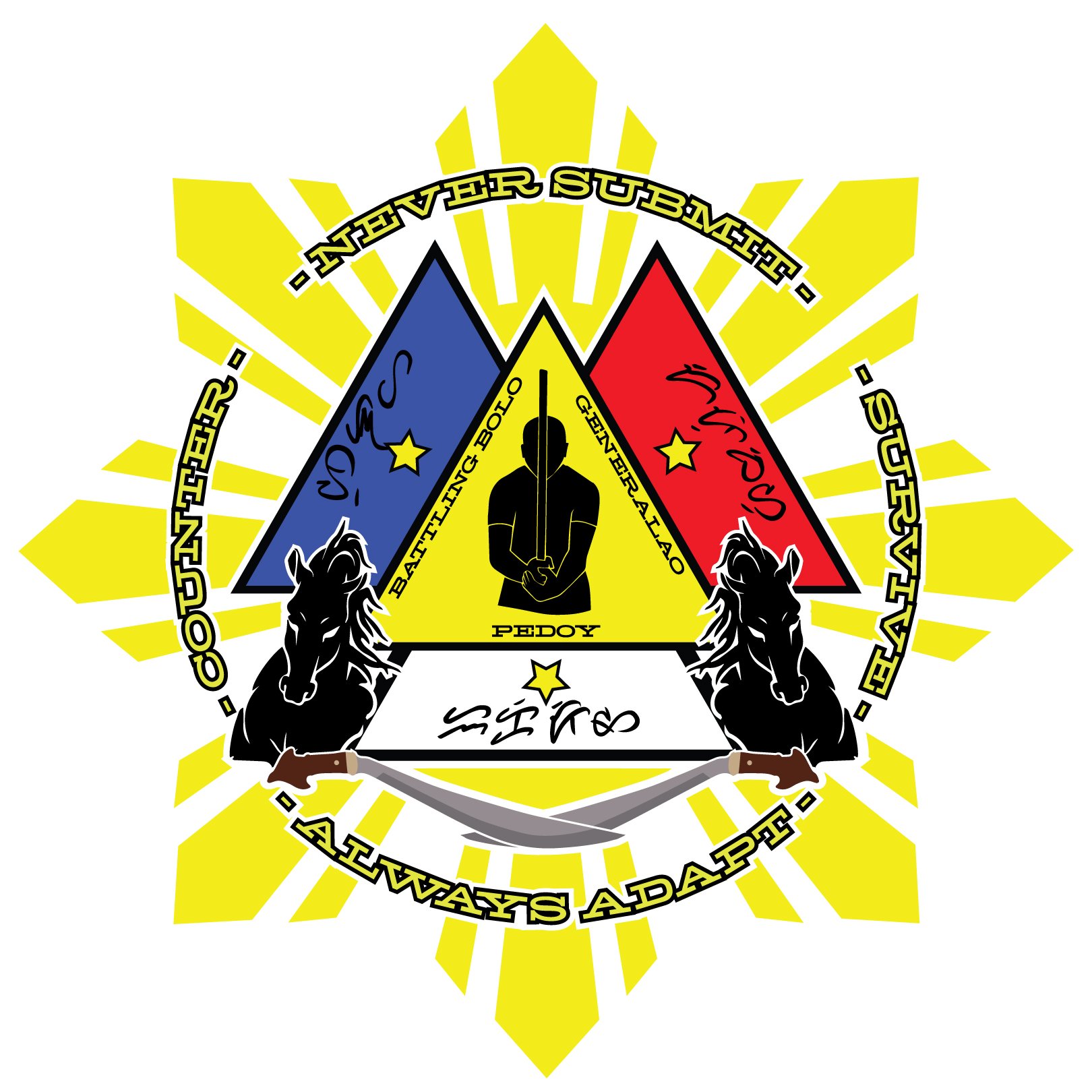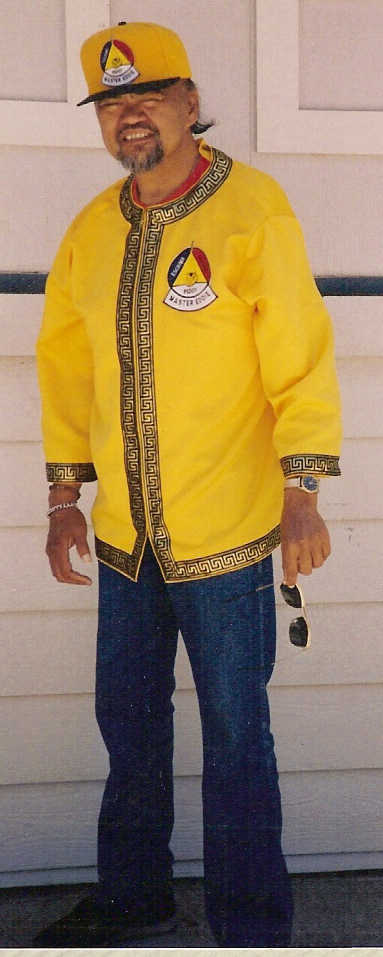Batikan Eduardo James Pedoy
Son of GGM Braulio Pedoy
(Feb. 2, 1950 - Oct. 22, 2008)
Only bloodline heir and son of GGM Braulio Pedoy, Batikan Eduardo James Pedoy was the catalyst to which prompted the GGM to begin teaching the art of Derobio Eskrima as it was taught to him by Gen. Faustino Ablen. Batikan Eduardo’s first passion of the martial arts was Kenpo, a widely popular art in the islands, and he unknowingly urged to test his skills against his father’s fighting style when he earned his black belt. As a young man, Batikan knew GGM Pedoy trained with other manongs and friends in the banana patch in the old Filipino blade and stick fighting but never knew the extent of GGM’s prowess and skill. He was soon humbled by his father and from that day on he put down his black belt and begged GGM to teach him his art of Derobio. Batikan became the first student and Chief Instructor while training and teaching alongside GGM’s step-grandchildren, his nephews and nieces (step family, GGM Pedoy married Bartolomia (Adaro) Pedoy) Tyrone Takahashi; now head and Grandmaster of the Pedoy’s School of Escrima Organization, Gail (Takahashi) Siangco; who’s family founded the Pulahan-Derobio Eskrima Organization. Other family members have trained throughout the years; however, these are the two main families of the art. The Pedoy’s School of Escrima was officially opened in 1961 and Batikan Eduardo was at the forefront of structuring the curriculum and training. Being a big man and power weight lifter in his youth, Batikan formulized a more powerful and direct style within GGM’s passive base of traditional Derobio that complemented his size and which translated greatly to the next generation of students; The Kramer brothers, Knut Peacock, Peter Schmall, Dan Medina, to name a few. After the passing of GGM Pedoy and his mother Bartolomia in the early 1990’s, Batikan Eduardo moved to the mainland to lay the seeds for the formation of the San Diego Branch of the Pedoy’s School of Escrima, headed by Chris Siangco and his sons. Batikan would then travel to established branches in New Mexico and solidify the name of Pedoy through the instructors promoted by GGM Pedoy. In 1995, he headed the first Derobio Congregation in which brought all heads of the school together for the first time. In 2004, he was promoted to his calling as Batikan or “expert” when Grandmaster Tyrone Takahashi resumed control of the Main Branch of the Pedoy’s School of Escrima. Through a long battle with diabetes, Batikan Eduardo passed away on Oct. 22, 2008 and was survived by his step-brothers Ponciano, Alberto and Marshall Adaro; step-sisters, Martina Navares, Rosa Rapoza and Juliana Riddle (mother of Tyrone Takahashi and Gail Siangco). Under Batikan Eduardo Pedoy the Pedoy School of Escrima has expanded from the Honolulu branch (The Master's School) in Hawaii to certified branches operating in Southern California, New Mexico, Georgia, and Florida as well as several Chief and Maestro Instructors teaching Derobio in various martial arts schools throughout the USA.
On December 21, 2007 at 10:15am, Proclamation Signing by Mayor Mufi Hanemann, acknowledging the International Martial Arts Hall of Fame Induction of Batikan Eduardo Pedoy. On December 30, 2007, Batikan Eduardo Pedoy was inducted into the International Martial Arts Hall of Fame.
Grandmaster Julian “Blue” Generalao
Generalao Method Karazenpo Go Shinjutsu Shaolin and Hawaiian Kempo / Kajukenbo
(Jan. 29,1935 - Nov. 27, 2006)
Julian Generalao was born on January 29, 1935 in Pahala, Hawaii the youngest of three children. "General" joined the United States Marine Corps in 1957 and served for four years. He lived in Loa Angeles working at The Record Rack, a record and tape distributor. At the same time he began his Kajukenbo career with Sonny Gascon. He became a member of the Karazenpo Go Shinjitsu Black Belt Society (KGS/BBS), a black belt society as an honorary board member. He moved to San Diego with The Record Rack, and in 1961 married Norma Llacuna. After 15 years with The Record Rack, the company closed and he became part of General Dynamics, working as a sheet metal supervisor, retiring after 15 years.
Throughout his life, General was an avid bowler and golfer and would spenmd nights and weekends at the Frontier Lanes in Pt. Loma, enjoying his friends in the bowling leagues. All the while continuing to stay involved with the karate community and polishing his Kajukenbo skills.
General established his own school, "Blues Training Academy" in the late 1990's and continued his work with many top karate chiefs and masters in Southern California and Hawaii. In 2004, General was honored with a promotion to "Grand Master", with a 10th degree Black Belt.
Grandpa Elias “Battling Bolo” Cantere
Panantukan / Filipino Boxing
(1904-1986)
Personal Account from Grandmaster Chris Siangco of his Grandfather...
My maternal grandfather was a very private man. Hard working and respectful of others. I found out later that he was a Welterweight Boxing Champion in Hawaii in the 20's and 30's. So I started asking him questions. He told me many stories of learning to box in the Philippines and than migrating to San Francisco and eventually LA. He had a match with the number contender and the winner would fight for the world championship. I don't recall the names at the moment. I do know the contender was Hispanic. Well anyway the Mexican fighter broke my grandfathers jaw in the first round but he never gave up. My grandfather lost by decision. He than came to Hawaii. His name was Elias (Battling Bolo) Cantere. He fought in the smokers clubs and eventually became Hawaii Champ. He started training us grandkids boxing from a very young age. That’s how we moved into Kenpo.
My uncle Young Bolo also a boxer told me a very interesting story. My Grandfather was a police officer on the Big Island (Hawaii). Young Bolo was in a bar and got into an altercation with a group of men and they beat him up really bad. When my Grandfather heard about the incident he went directly to the bar and found the men still at the bar. He took his billy club and sent all the men that was in the bar to the hospital. Because he was still on duty and needed to follow rules he was fired. After hearing the story I approached my Grandfather and asked him about the bar incident; I was about 12 years old. He told me when he was learning boxing from a family member in Pangasinan. He was also trained in stick fighting. The trainer would attack my grandfather with the stick and he would have to use footwork to get out of the way. He was told if he could move away from the point of the stick he can easily dodge a punch. My grandfather never taught us grandkids stick fighting but he did teach how to box.
Years later after the death of my Grandfather I had a conversation with his son my Uncle Ricky. You see in Hawaii you needed to learn how to defend yourself. My family lived in one of the roughest neighborhoods in Hawaii called Damien Track near the Airport. Lots of Kenpo Masters came from that area, some moved to Palama area. Anyway my Uncle, told me that Kenpo originated from Karate, true, but he also told me that boxing, and fiipino martial arts was intergrated in kenpo. FMA had a huge affect on the evolution of Kenpo, Kajukenbo and C.H.A-3 kenpo. Is it chance that all of the Kenpo masters were Filipino. Than why not teach FMA instead of karate? They were forbidden to teach it? All first generation Filipinos that were skilled in blade and garrote had that, keep it secret mentality. Only family learned moves. Some old men did not even teach it to their own family because they thought that it was to dangerous. And they knew that if taught to the someone with the wrong attitude can be disastrous.
Article on Elias "Battling Bolo" Cantere and Filipino Smokers Clubs in Hawaii...
http://ejmas.com/jcs/jcsart_svinthetal_0303.htm
